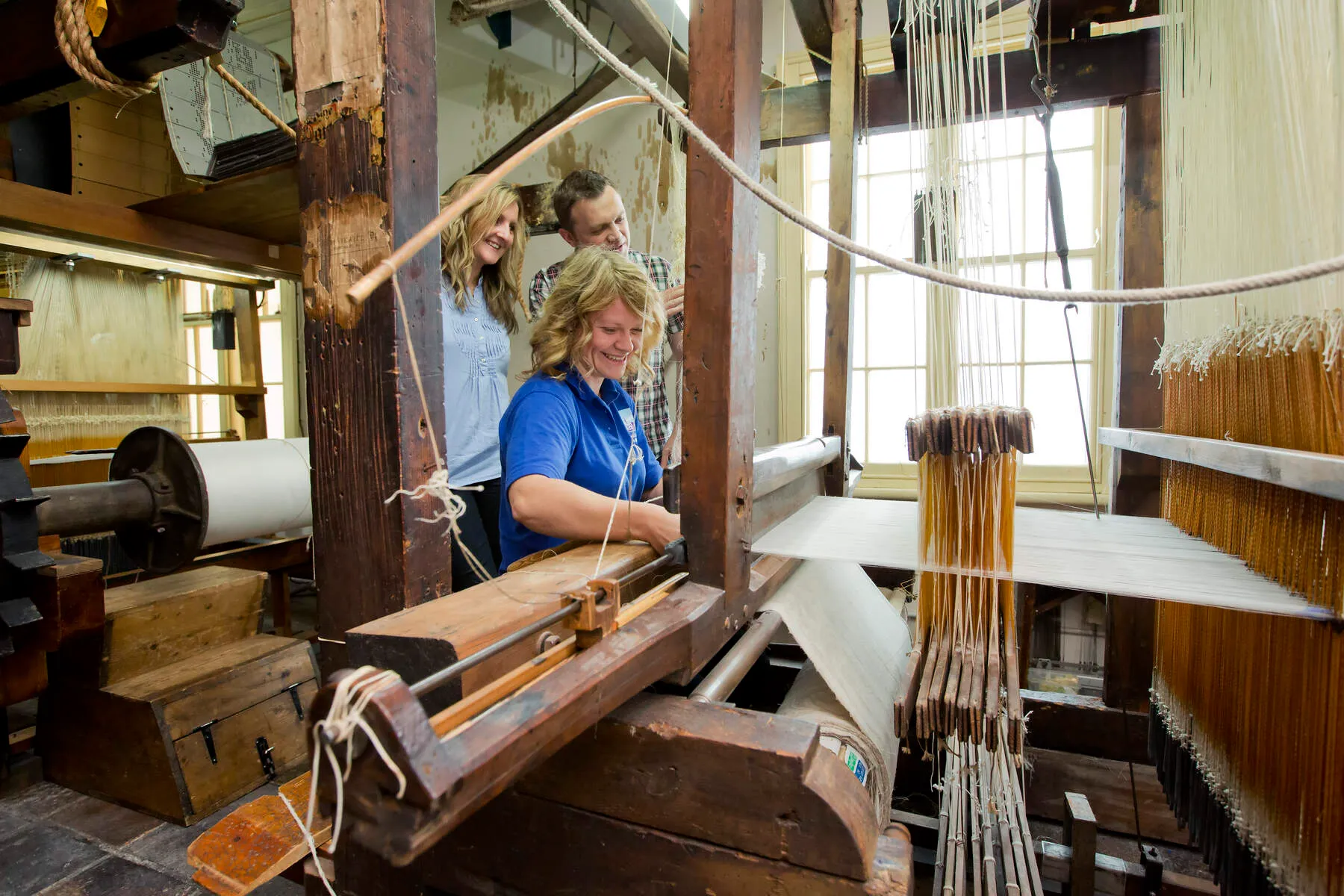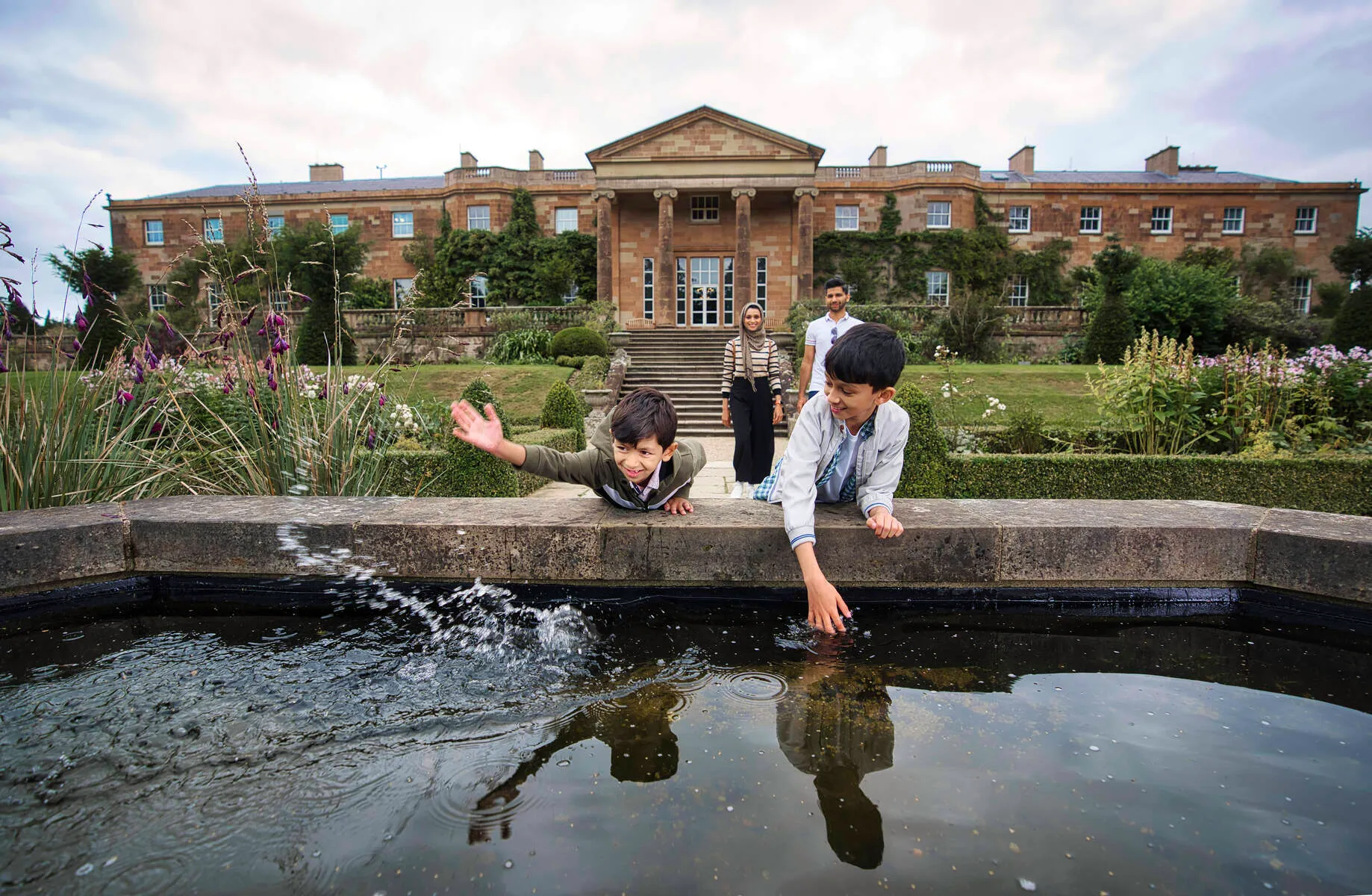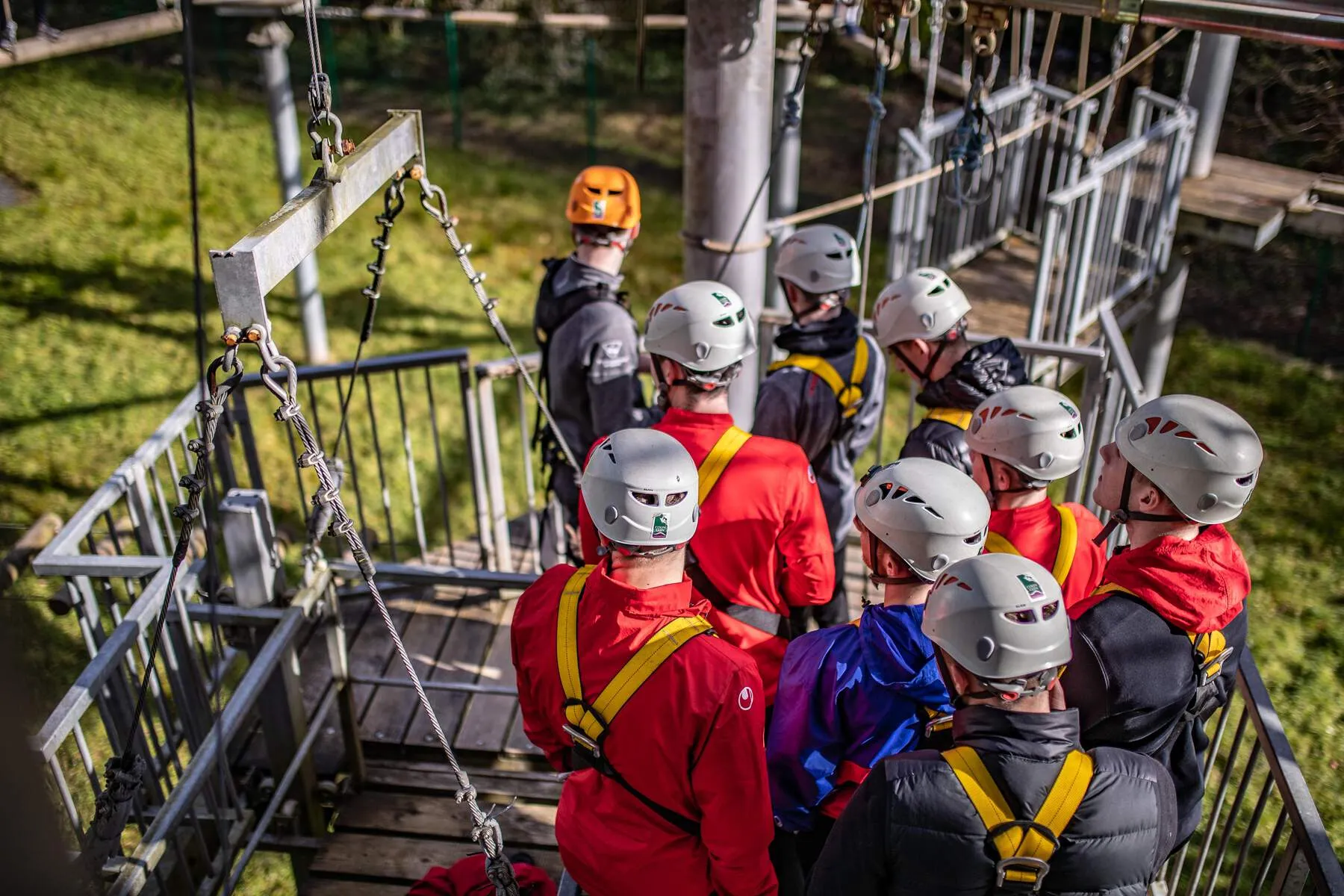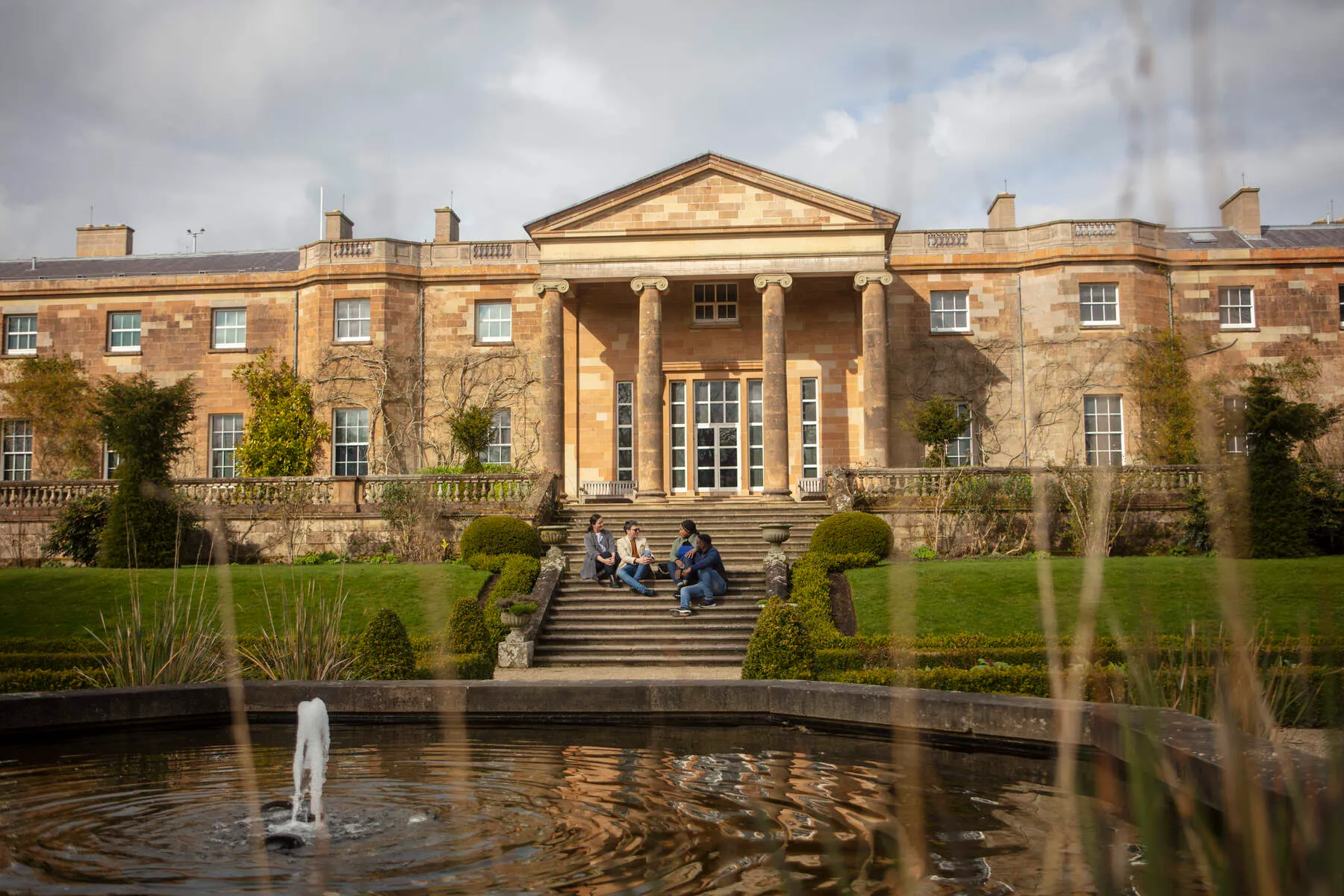Lisburn, County Antrim, hums with the quiet pride of a city that still feels like a town. Nestled where the River Lagan curves through fertile valley land, this 400-year-old settlement is steeped in linen heritage - a legacy woven into its streets and showcased at the Irish Linen Centre & Lisburn Museum. Step inside its historic market house to trace how flax transformed lives here since the 17th century, or wander Christ Church Cathedral's arches, a relic of Ireland's Plantation era. Just beyond its car-free center, where specialty cafés serve coffee in atmospheric squares, lie lush landscapes: Wallace Park's Victorian duck ponds mirror the sky, while the Lagan Towpath trail unfurls like a ribbon toward Belfast, 9 miles north.
This compact yet cosmopolitan place balances history with modern energy. Stroll through Hillsborough Castle's 100-acre gardens - official royal grounds dotted with ancient trees - or rev up adrenaline at Colin Glen Forest Park's ziplines. Savor locally crafted beers at Hilden Brewing Company, or lose yourself in the Ulster Aviation Society's fleet of historic planes. Whether you're tracing linen's legacy, exploring royal estates, or sipping craft brews under anemone-filled skies, Lisburn offers Northern Ireland's rich stories in a setting where city sophistication meets countryside calm - all within easy reach of Belfast's vibrant pulse.
Jump to section:
Things to See and Do

Irish Linen Centre & Lisburn Museum
Explore the history of linen production in Northern Ireland through interactive exhibits like 'Flax to Fabric' at this free museum. Housed in a 17th-century market house on Market Square, it also showcases local crafts and artifacts.

Hillsborough Castle & Gardens
The official royal residence features guided tours of historic state rooms and expansive gardens spanning 100 acres. Located ~15 minutes from Lisburn town center.

Colin Glen Forest Park
Adventure park with high ropes courses, ziplines, and the Gruffalo Trail for kids. Includes outdoor sports facilities like an Alpine coaster (~20 minutes from Lisburn).
Ulster Aviation Society
Aviation museum displaying over 54 aircraft in historic hangars. Offers guided tours and ongoing restoration work visible to all ages.
Christ Church Cathedral
A historic Anglican cathedral built in 1623 on the site of earlier churches. Known for its Plantation-era architecture and located near Market Square.
Wallace Park
Victorian garden with century-old trees, a bandstand, duck pond, and playgrounds. Commemorates Sir Richard Wallace's philanthropy, near Lisburn train station.
Sir Thomas & Lady Dixon Park
128-acre park featuring themed gardens (Japanese/Rose), walking trails, and a café. Offers family-friendly activities near Belfast outskirts.
Lagan Towpath Trail
A 17km riverside path starting in Lisburn for cycling/hiking to Belfast. Highlights include the Lagan Valley lock system and scenic River Lagan views.
Down Royal Racecourse
Hosts prestigious horse racing events like the Ulster Derby (June) on Gravelhill Road, ~4 miles from Lisburn town center.
Hilden Brewing Company
Craft brewery offering taproom dining and microbrewery tours at 192 Grand St. Open midday hours with weekend evening sessions.
Maze Long Kesh Site
Former prison site of Maze/Long Kesh (1970s-2000). Current redevelopment plans include Eikon exhibition spaces on Halftown Road.
Lagan Valley Island
Arts complex housing the Island Hall Theatre, Studio Theatre, and event spaces. A cultural hub for performances/conferences at BT27 4RL.
Getting There
Air
To get to Lisburn by air, the nearest airports are Belfast International Airport (BFS IATA, aka Aldergrove) and George Best Belfast City Airport (BHD). From Belfast International Airport, you can take Ulsterbus 109A, which runs hourly M-Sa to Lisburn. You can also fly into Dublin Airport (DUB IATA) and take Expressway Bus X1, which runs every couple of hours from Dublin Busáras and Airport via Newry and Banbridge, halting at Sprucefield retail park at the south edge of Lisburn on its way into Belfast.
Rail
Trains run every 30 min from Bangor via several Belfast stations to Lisburn (30 min), and continue to Lurgan and Portadown. The Belfast-Dublin Enterprise trains don't stop here (except for one weekend train), so you need to change at Portadown. Lisburn railway station is north side of town centre, with both platforms wheelchair accessible. Trains also stop at the north edge of town at Hilden.
Bus
Several bus services operate to and from Lisburn:
-
Ulsterbus 551 / 538 runs every 30 min from Belfast Europa bus station to Lisburn (40 min)
-
Bus 538 continues to Hillsborough, Banbridge, and occasionally to Newry
-
Bus 551 continues to Moira, Lurgan and Craigavon, and occasionally to Portadown
-
Ulsterbus 22 / 23 / 24 runs to Lisburn from Belfast every hour or two via Tullynacross and Drumbeg (40 min)
-
Ulsterbus 109A runs hourly M-Sa from Antrim town via Belfast International Airport and Crumlin to Lisburn
-
Bus 26 runs three times M-F from Newcastle via Dundrum, Ballynahinch and Hillsborough to Lisburn, taking 1 hr 15 min
-
Expressway Bus X1 runs every couple of hours from Dublin Busáras and Airport via Newry and Banbridge, halting at Sprucefield retail park at the south edge of Lisburn on its way into Belfast
Lisburn bus centre is located south side of town centre.
Car
Lisburn is just over 9 miles southwest of Belfast. There's a free Park & Ride at Sprucefield (M1 junction 8) though it's intended for commuters into Belfast. You can drive to Lisburn via the M1 motorway from Belfast, with parking facilities available in the city.
Events & Festivals 2025
There are currently no events listed. If you would like to add an event, please contact us.
History
Lisburn's history began to take shape in 1600, a year marked by Irish chieftains rising against English rule in Ireland. The village of Lis-na-garvoch, later known as Lisburn, was part of the territory of Killultagh, which fell into the hands of Sir Fulke Conway after the rebellion failed. Conway invited English and Welsh tenants to settle in the area, laying the foundation for the modern town. By 1627, Conway Castle was built, and the settlement consisted of 53 tenements.
The town's early years were marked by conflict, including a great rebellion in 1641, during which Lisburn remained loyal to England and King Charles I. The rebels were unable to take the town, but reduced it to ashes, leading to a change in the town's name from Lisnagarvey to Lisburn. Another significant fire in 1707 halted the town's growth, destroying the castle, which was never rebuilt.
The late 18th century saw a period of reconstruction in Lisburn, with many houses being built, some reaching four stories high. The town's linen industry began to flourish, thanks in part to the influence of French Huguenot refugees who introduced new manufacturing techniques. By the early 19th century, Lisburn had become a major center for linen production, with factories like Coulson's and Barbour's employing thousands of workers.
Lisburn's industrial expansion led to significant social and economic changes, including the growth of a wealthy class of manufacturers and merchants. The town's residents also developed a strong sense of community, with many philanthropic efforts aimed at improving living conditions and education for the working class. Despite the challenges posed by the Industrial Revolution, Lisburn emerged as a thriving town, with a rich cultural heritage and a strong sense of identity.
